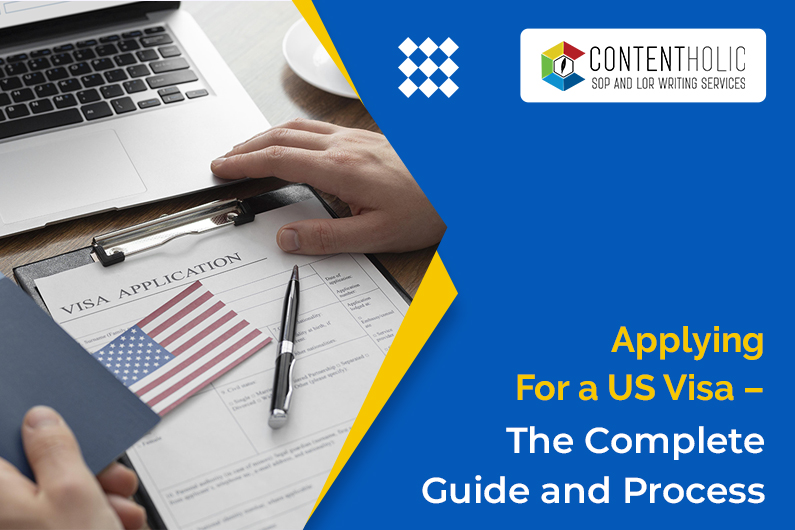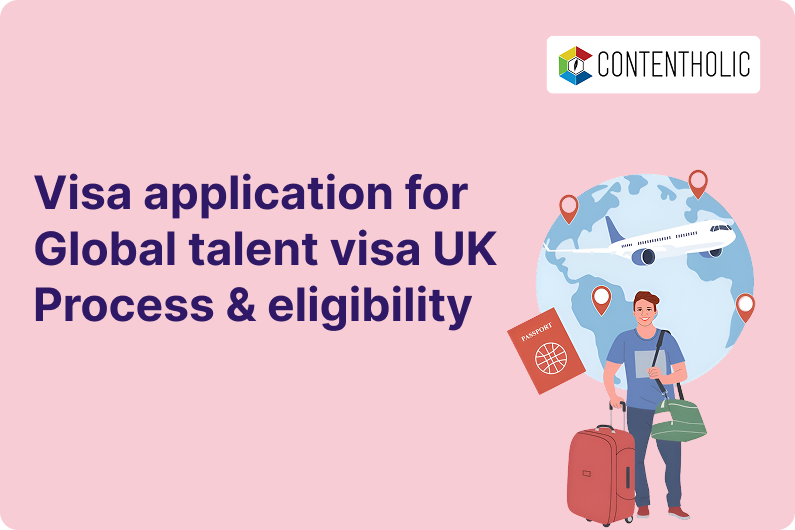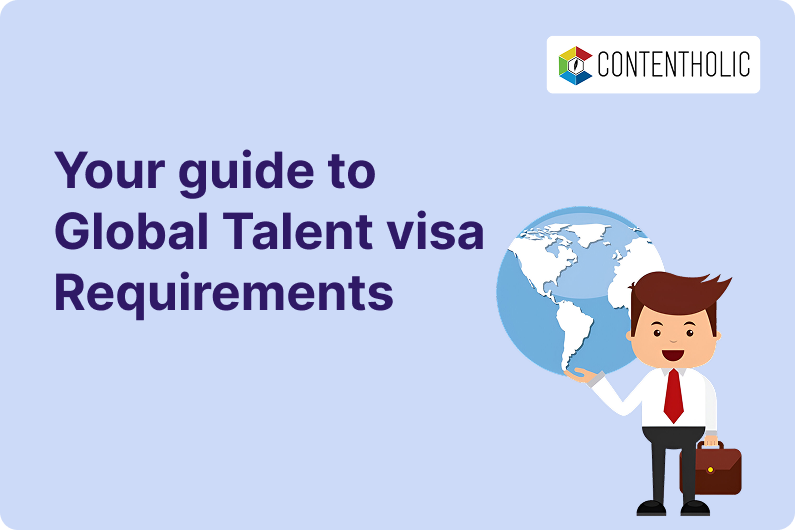In this age, who wouldn’t want to chase after the American dream? It is the idea that all people, irrespective of their place of birth or social status, can achieve their own definition of success in a society that offers upward mobility to all. This ideology assumes that one can achieve their aspirations through determination, hard work, and taking chances, rather than relying on luck. This concept has been an integral part of American culture and identity, and it continues to inspire people around the world to pursue their aspirations. With their head full of dreams and an insatiable desire to reach their goals, millions of individuals apply for a US visa every year, the country still remains to be one of the most popular destinations to relocate to.
Why the US?
According to data from the Migration Policy Institute, in 2021, approximately 1.3 million people legally immigrated to the US.
This number includes both individuals who come to the US on temporary visas, such as work or student visas, and those who come with the intention of permanently residing in the country as lawful residents, this is because since its founding, the United States has become one of the most powerful nations in the world, with a strong economy and a vibrant culture.
The country is a world leader in science and technology, with numerous groundbreaking discoveries and inventions that have huge changes in history. It is a land of opportunity and a beacon of democracy and freedom for people around the world, some of the benefits of relocating to the US are as follows:
- The US dollar is widely recognized as the world’s primary reserve currency, which reflects the country’s stability and reputation. According to a survey of all OECD nations, Americans have the highest average household income globally. Additionally, the cost of living in America is surprisingly low as the country was rated first for affordability and food security in the Global Food Security Index.
- Only a small portion of the country’s population (5.5%) is unemployed, that’s because the employers are open to seeking the best talent from abroad to improve their businesses. If you possess a skill that a US company requires, they are often willing to assist you in various ways, including arranging visas and helping you find a home. Once you arrive, you can benefit from good job security and satisfaction, and if you demonstrate a strong work ethic and continue to add value, your career can thrive. The country also consistently ranks among the top five countries in the world for workforce productivity.
- The American college system is highly esteemed globally, and according to the QS World University rankings, almost half of the world’s top 20 colleges are located right here in America. The rankings may vary depending on the methodology and criteria used. However, some of the most highly regarded institutions in the country include Harvard University, Massachusetts Institute of Technology, Stanford University, Yale University, Princeton University and many more.
- The healthcare system in the US is among the finest in the world. With adequately funded hospitals, highly trained personnel, and innovative medical breakthroughs, you can trust that you will receive exceptional treatment if the need arises. As part of your employment benefits, companies may also provide comprehensive medical and dental coverage that extends to your spouse and children. This is often included as part of your salary package and can be quite generous.
- The country offers several travel opportunities with many exotic destinations nearby. Canada, Central and South America, and the stunning Caribbean islands are all only a few hours away and ideal for a longer getaway.
What is a US visa?
A U.S. visa is a document that foreign citizens who want to travel to the United States for different purposes such as tourism, education, work, business, or to visit family must obtain before entering the country.
It is a legal authorization that permits the holder to enter the US for a specific period and for a particular reason as mentioned above. This visa is placed in the traveler’s passport and contains information about the visa holder, the visa type, and the period for which it is valid.
It is also important to note that having a US visa does not guarantee entry in the country; the final decision to allow entry lies with the US Customs and Border Protection Officer at the port of entry.
Benefits of a US visa
Applying for visas can be a burdensome process for any traveler, requiring significant paperwork, expenses, and potential trip delays. Individuals holding less powerful passports can especially understand this struggle. However, it is not entirely negative. Certain visas, like a US visa, can provide many benefits including:
- There are 49 countries and territories worldwide that allow entry without a visa if you possess a valid US B1/B2 visa in your passport. Obtaining a US B1/B2 visa can expand your list of visa-free countries, which is especially useful if you have a weak passport.
- Some Schengen countries, including France, Germany, and Spain, allow US visa holders to transit without a transit visa. Similarly, if you have a valid US visa, you can transit through the UK without obtaining a transit visa.
- Flying through the US can be a more economical option for those traveling from Europe or Asia to destinations in Mexico, South America, or the Caribbean. This makes the US a cost-effective transit hub for these destinations.
- One of the benefits of holding a US B1/B2 visa is the ability to access some isolated travel locations more easily. For instance, flights to some of the more remote locations in the Caribbean, such as the Bahamas and Turks and Caicos, often only depart from the US. This makes having a US visa a significant advantage, as you can use it to fly into the US first before continuing on to these destinations.
- With a US visa, you can receive a 10-year B1/B2 visa regardless of whether you have previously visited the US. This allows for unrestricted travel to and from the US for up to 180 days per entry, for the visa’s duration of 10 years.
- Having a US visa can strengthen your visa application for countries like the UK, Canada or Australia as a US visa is one of the most challenging visas to obtain and being in possession of a US visa suggests that you have undergone a rigorous screening process, demonstrating strong ties to your home country, adequate financial resources for travel, and no intention of overstaying.
Types of US visas
The type of visa required under U.S. immigration law is determined by the reason for your planned travel and other relevant information. To be granted a visa, you must show that you meet all the necessary requirements for the visa category you are seeking.
At a U.S. embassy or consulate, a consular officer will evaluate your eligibility for a visa based on the applicable laws and regulations, and determine which visa category is appropriate for you.
There are roughly 185 types of visas issued by the United States, which can be broadly categorized into two main groups:
1. Nonimmigrant visas: These visas are issued for temporary visits to the United States for a specific purpose and for a limited time period, including purposes such as tourism, business, employment, visiting family members, and studying.
Some common types of nonimmigrant visas include:
- B1/B2 visa: for tourism, business, and medical treatment issued for a maximum of 6 months, this is a type of Visitor visa.
- F1/F2/M1 visa: for academic studies and vocational purposes.
- J1/Q visa: for exchange visitors who participate in exchange programs and practical training in the US.
- H1B visa: for skilled workers.
- H1B1 visa: for skilled, temporary workers coming from Chile and Singapore.
- H-2A visa: for temporary agricultural workers selected from countries in whom the US has some type of interest.
- H-2B visa: for other types of temporary seasonal workers, who do non-agricultural work.
- H-3 visa: for those wanting to seek training and education opportunities.
- O1 visa: for people with extraordinary abilities in the fields of arts, science, business, education, or athletics and want to temporarily work in the country.
- O2 visa: designed for the assistants of O1 visa holders.
- O3 visa: designed for dependents of O1 visa holders.
- L1 visa. Issued to intracompany managers or executives.
- P1 visa: for athletes and entertainers
- R1 visa: for temporary religious workers who want to practice within the country.
- TN/TD visas: for nationals of Canada or Mexico working in the NAFTA organization.
- E3 visas: for nationals of Australia working in specialty occupations.
- I visa: for journalists’ part of the press, film, radio, print etc. and representatives of foreign media
2. Immigrant visas: These visas are issued to individuals who plan to relocate permanently to the United States either under immigrant investor programs or for family reunification.
Some common types of immigrant visas include:
- Family-based immigrant visas: for spouses, children, parents, and siblings of US citizens or permanent residents
- Employment-based immigrant visas: for individuals with a job offer in the United States or who possess extraordinary abilities in their respective field
- Diversity visa: a lottery-based program that grants visas to individuals from countries with low rates of immigration to the United States
- Investor visas: for individuals who make significant investments in US businesses, with the goal of creating jobs and stimulating the economy
US visa application
The process of applying for a US visa is generally uniform and straightforward across all visa types, but variations exist depending on the specific category and type of visa being sought as well as the applicant’s country of origin. The recommended approach is to consult the official website or visit the nearest US embassy or consulate to obtain a clear understanding of the procedures involved, as there may be differences in the application process based on the applicant’s country of residence.
To apply for a US visa, it is essential to follow these steps at a US consulate or embassy in your country of residence:
- Check whether a visa is required.
- Select the appropriate type of US visa to pursue.
- Complete the Non-immigrant visa application form DS-160.
- Submit the application fee.
- Arrange a visa interview appointment.
- Assemble the necessary documents.
- Appear for the visa interview.
- Wait for processing to be completed.
Check whether a visa is required
If you meet the eligibility criteria and hail from a country with strong ties to the US, you won’t need to apply for a visa. Rather, the stamp on your passport indicating membership in the Visa Waiver Program (VWP) is the only document required for entry into the US.
Managed by the Department of Homeland Security, the Visa Waiver Program (VWP) was designed to improve safety for visitors to the US while also allowing US citizens to travel more freely to those 40 countries. This mutual arrangement brings several benefits, including enhanced safety during travel.
These citizens of 40 nations can travel to the US for up to 90 days without a visa under the mentioned program, if their purpose of visit aligns with those applying for a B1 or B2 visa.
Select the appropriate type of visa
The second phase of the US visa application is to select the specific category of visa that you wish to obtain. As there are variations depending on the type of US visa, it is crucial to take extra caution in selecting the appropriate visa category to pursue.
Complete the non-immigrant visa application form DS-160
This step is necessary if you’re seeking a nonimmigrant visa to the United States. The form DS-160 is the online application form that you’ll need to complete in order to apply for your visa. You can find the form on the official website of the US consulate where you plan to apply.
You have two options for filling out the DS-160:
- You Can either complete it yourself using the consular electronic application center.
- You can seek assistance from a recommended third-party company such as Visa Express.
Additionally, the DS-160 is divided into two parts:
In the first part, you’ll need to provide all your required personal information such as your full name, nationality, marital status, date and place of birth, address, country, mobile number, email, passport details, family information, education, and work history.
In the second part of the application, you will be required to answer questions related to security and background information, including whether you have ever been arrested or convicted of a crime, engaged in drug-related offenses, been involved in money laundering etc.
Submit the application fee
After successfully completing all the necessary steps mentioned above in your visa application, the next requirement is to make a payment for the application fees.
The fee amount varies depending on the type of visa that one is applying for, and the fee schedule is divided into different tiers.
For instance, the visitor and other types of non-immigrant visa fee for applicants is around $160-$185, while petition-based applicants (H, L, O, P, Q, R) are required to pay $190, and E-1, E-2 & E-3 visa applicants are required to pay $205.
It’s also essential to keep in mind that the visa application fee is non-refundable, whether you choose to cancel your appointment or if your visa application is declined.
Apart from the US visa application fees, applicants may also be requested to pay US visa issuance fees, which are determined by the relationship between the US and the applicant’s home country. As a result, some applicants may be required to pay them, while others may not be.
Arrange a visa interview
If you are a nonimmigrant visa applicant aged between 14 and 79, once you have submitted your Form DS-160, you should immediately schedule an interview appointment. You will receive a confirmation letter for your interview, which you are required to bring with you on the day of your interview.
To schedule this mandatory interview, you need to contact the US consulate or embassy where you are applying. It’s also important to note that due to a high workload, there may be a waiting period ranging from a few days to several weeks. Therefore, it’s advisable to schedule your interview as soon as possible. In case of any emergency, you may be eligible for an expedited US visa appointment if you meet certain criteria.
Assemble the necessary documents
Apart from submitting your application form or Form DS-160, you must also provide the necessary documents for your US visa application. These documents are required to demonstrate to the US consulate that you meet the eligibility criteria for the visa you are applying for.
Appear for the visa interview
The last stage of your application process is the visa interview, where you must arrive on time with all your supporting documents.
During the interview, an official will ask you questions related to your background and other pertinent information based on the type of visa you have applied for.
Keep in mind, if your purpose for visiting the US is work-related, the interview might take longer than if you were visiting only for tourism purposes.
Wait for processing to be completed
Once you have completed your visa interview, you need to wait for your application to be processed. The processing time varies depending on the type of visa you have applied for and can take anywhere from a few days to several months.
When your visa is processed, you will be informed immediately whether it has been approved or denied.
It’s important to refrain from making travel arrangements until after your visa has been approved to avoid incurring expenses in case of a visa denial.
Some frequently asked questions (FAQs)
Can I expect a refund of my visa application fees if my application is denied?
If your visa application is rejected, you will not receive a refund since the fees paid are utilized for processing the application. The visa application fees are mandatory for all applicants and cannot be waived regardless of their location in the world.
What should I do if my US visa is no longer valid?
The process to renew your US visa is similar to the one you went through when applying for it initially. All US visas have an issuance date and an expiration date that are stamped on the passport. If the visa has already expired, it’s necessary to renew it.
How do I become a US citizen?
To become a US citizen with a US visa, you must first obtain a US immigrant visa since nonimmigrant visas don’t make you eligible to directly apply for citizenship. This can be a long process, but some nonimmigrant visas allow for dual intent, meaning that you can apply for an immigrant visa and change your status once you fulfill certain requirements.
Can I check the status of my friend’s visa application?
It is not possible to check the visa application status of your friend due to the privacy laws set out in the Immigration and Nationality Act (INA) 222(f) in the US. Only the applicant can inquire about their visa application by contacting the US Embassy or Consulate abroad to obtain all the necessary information.
Is it possible to bring my parent’s in the country?
It is not possible to bring your parents to the United States along with you because it is generally not permitted under most visas as they are not considered immediate dependents. However, you may be able to sponsor your parents or siblings for an immigrant visa under the Immediate Relative or Family Based Immigrant Visas category.






